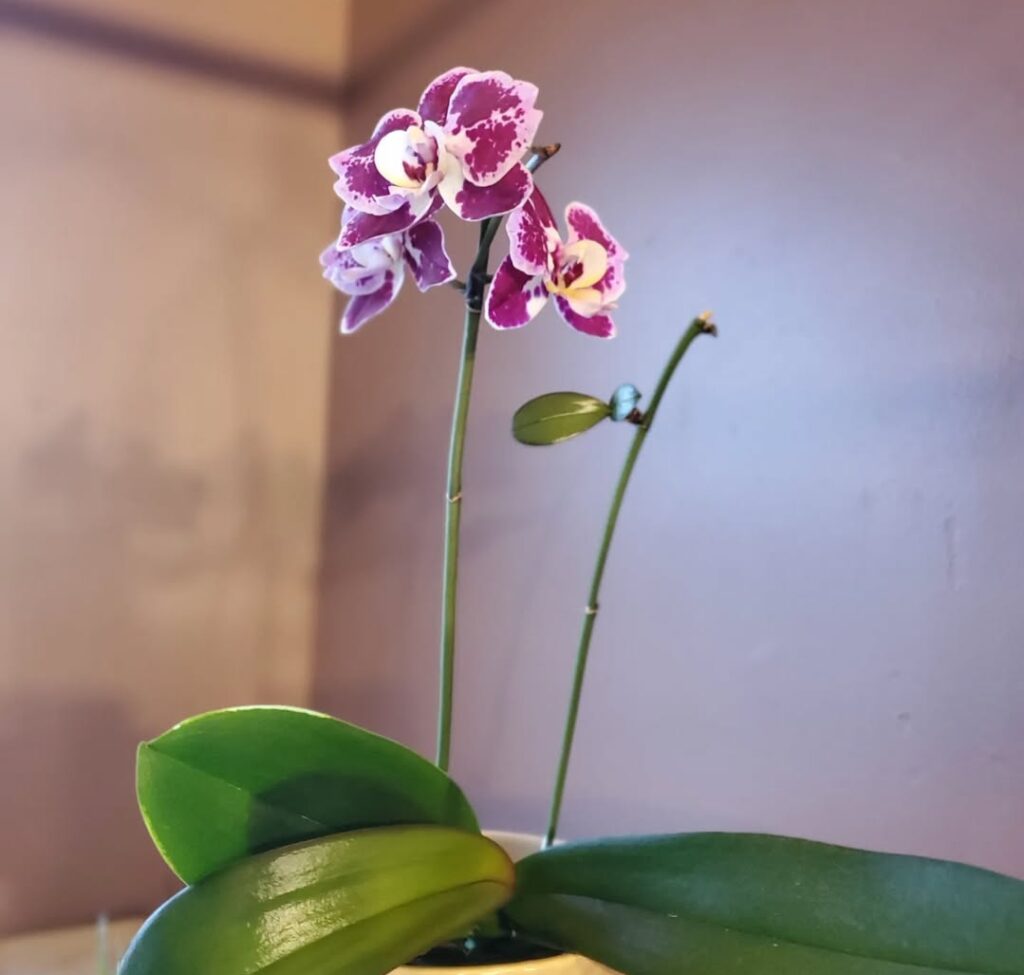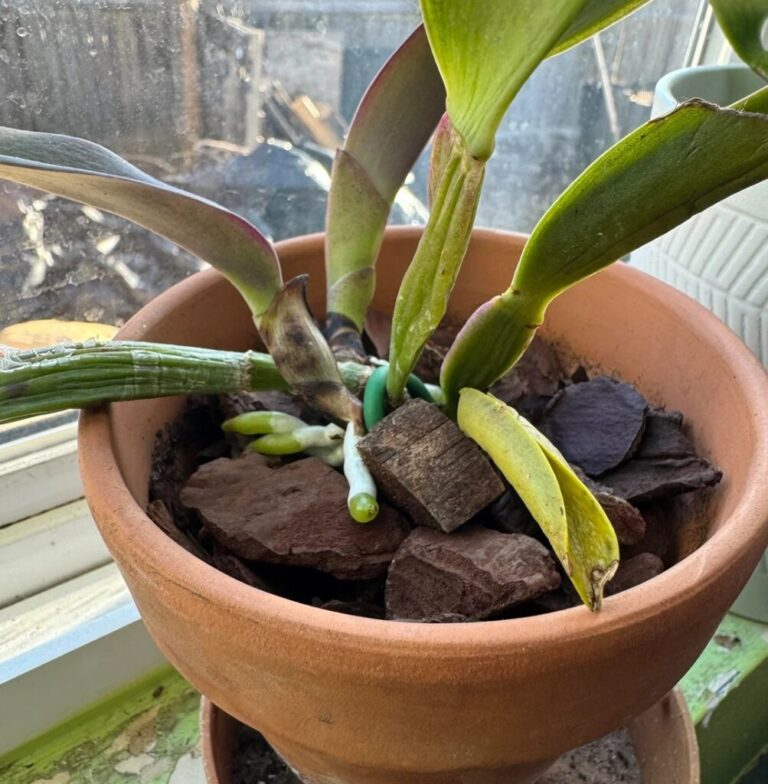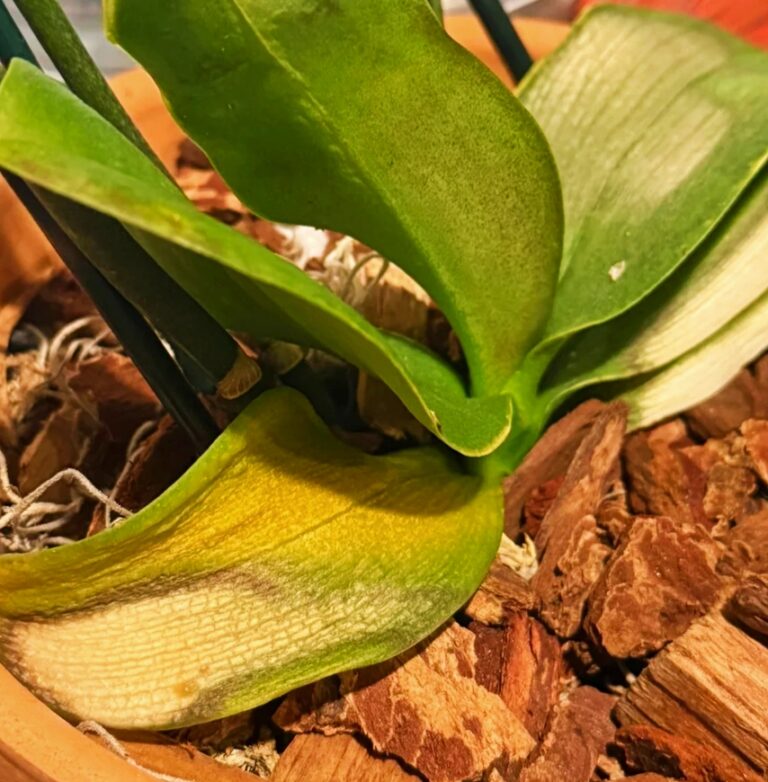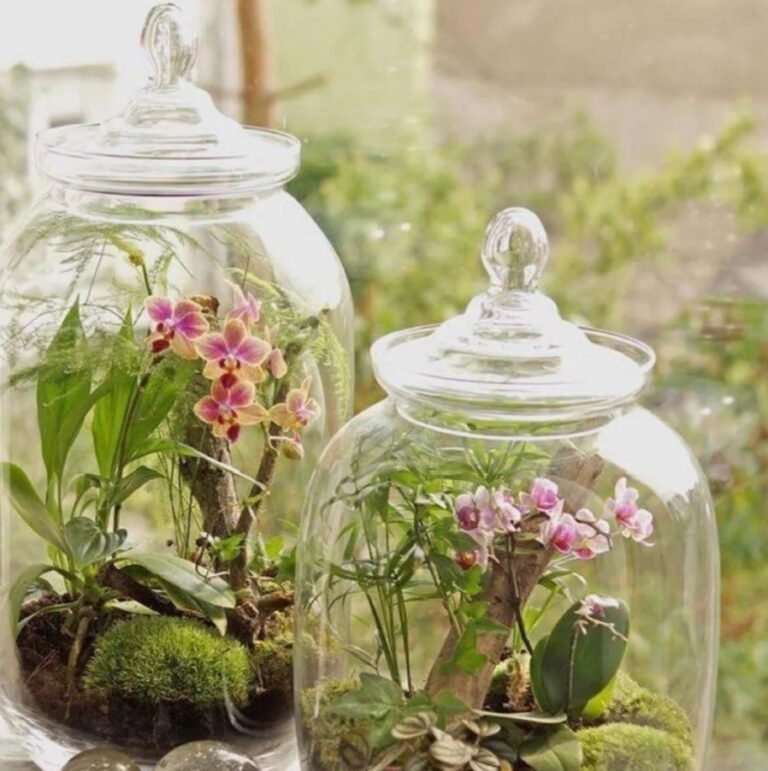- 1 Orchid Fertilizer Guide
- 2 Understanding the Importance of Orchid Nutrition
- 3 Types of Orchid Fertilizer Available Today
- 4 Decoding Orchid Fertilizer Numbers (N-P-K Ratios)
- 5 When to Fertilize Your Orchids
- 6 Best Practices for Applying Orchid Fertilizer
- 7 Seasonal Orchid Fertilizing Schedule
- 8 Signs of Improper Fertilization
- 9 Organic vs. Synthetic Fertilizer Options
- 10 Special Fertilizing Considerations for Different Orchid Species
- 11 Conclusion: Nurturing Your Orchids to Their Full Potential
- 12 FAQ
Growing orchids is a rewarding journey, but it takes more than just light, humidity, and repotting to maintain healthy, blooming plants. Proper fertilization is the key to vigorous growth and stunning blooms. Orchids need specific nutrients in the right amounts at different times of the year. Without a clear fertilizing routine, it’s easy to over-fertilize or miss vital nutrients, which can leave your orchids weak and bloomless. This guide will help you master the art of orchid fertilizing, avoid common mistakes, and keep your plants thriving all year long.
Proper care of orchids is key to keeping them healthy and blooming. Fertilization is a crucial part of this care. The right fertilizer types and N-P-K ratios give your orchids the nutrients they need to grow well. Knowing about orchid care and fertilizers can greatly improve your orchids’ health and beauty.
Orchid Fertilizer Guide

Orchid care is more than just watering and giving them light. It also means paying attention to their nutritional needs. By picking the right fertilizers and understanding N-P-K ratios, you can tailor a care plan for your orchids. This ensures they get the nutrients they need to thrive.
Key Takeaways
Proper orchid care is essential for maintaining healthy, blooming plants
Fertilizer types and N-P-K ratios play a crucial role in orchid nutrition
Understanding orchid care and fertilizer types can improve plant health and beauty
Orchid care involves attention to specific nutritional needs
Choosing the right fertilizer types can create a personalized care plan for your orchids
N-P-K ratios are essential for providing the necessary nutrients for optimal growth
Understanding the Importance of Orchid Nutrition
Orchids need special nutrients to grow well. This makes plant nutrition key to their care. The right nutrients help them grow strong and bloom well. A healthy orchid fights off diseases and pests better.
Orchids need a mix of nutrients like nitrogen, phosphorus, and potassium. These help their roots, leaves, and flowers grow. Without these, orchids become weak and are more likely to get sick or attract pests.
Why Orchids Need Special Fertilization
Orchids get moisture and nutrients differently than other plants. They use their roots to absorb what they need. So, it’s important to give them a balanced fertilizer. The wrong fertilizer can harm them, showing why the right one is crucial for blooming orchids.
The Role of Nutrients in Orchid Growth
Nutrients are vital for orchid growth. Without the right nutrients, orchids can’t stay healthy. A balanced fertilizer with nitrogen, phosphorus, and potassium is key for growth and orchid health. Here’s a table showing the important nutrients and their roles:
| Nutrient | Role in Orchid Growth |
|---|---|
| Nitrogen | Promotes healthy leaf growth and development |
| Phosphorus | Encourages root development and blooming |
| Potassium | promotes the general health and disease resistance of plants |
Natural vs. Artificial Fertilization
Growers can choose between natural and artificial fertilizers for orchids. Natural fertilizers like compost release nutrients slowly. Artificial fertilizers give a quick boost. It’s important to think about how each affects orchid health and the environment.
Types of Orchid Fertilizer Available Today
Choosing the right fertilizer is key for orchid health and blooms. Different orchid species need different nutrients. Some need more nitrogen, while others need more phosphorus for flowers.
There are many fertilizers out there, including:
Water-soluble fertilizers
Granular fertilizers
Organic fertilizers
Synthetic fertilizers
Each type has its own benefits and how-to use. It’s important to know these to help your orchids grow.
Here’s a quick look at the different fertilizers:
| Fertilizer Type | Characteristics | Application Method |
|---|---|---|
| Water-soluble fertilizers | Easy to apply, fast-acting | Mix with water, apply to roots |
| Granular fertilizers | Slow-release, long-lasting | Apply to soil, water thoroughly |
| Organic fertilizers | Natural, environmentally friendly | Mix with soil, apply to roots |
| Synthetic fertilizers | Highly concentrated, fast-acting | Mix with water, apply to roots |
By picking the right fertilizer and using it correctly, you can help your orchids grow well and bloom.
Decoding Orchid Fertilizer Numbers (N-P-K Ratios)
Understanding the N-P-K ratios on fertilizer labels is key for orchid care. These ratios show the amounts of nitrogen, phosphorus, and potassium. Each nutrient is vital for orchid growth and blooming.
Understanding Nitrogen Requirements
Nitrogen is crucial for amino acids, which build proteins. It helps with leaf growth, making it essential for orchids. A balanced N-P-K ratio ensures orchids get enough nitrogen without too much.
Phosphorus for Blooming
Phosphorus is important for blooming and root growth. It helps orchids produce flowers and grow roots. This is key for water and nutrient uptake. A good phosphorus level in the N-P-K ratio helps with blooming.
The Role of Potassium
Potassium supports plant health, fighting diseases and balancing water. It also aids in root growth and nutrient uptake. A balanced N-P-K ratio ensures orchids get the potassium they need for growth.
Knowing about N-P-K ratios helps you choose the right fertilizer. This way, you can give your orchids the nutrients they need for healthy growth and blooming.
| Nutrient | Role in Orchid Care |
|---|---|
| Nitrogen | Promotes leaf growth and development |
| Phosphorus | Encourages blooming and root development |
| The element potassium | Enhances the general health and resistance to illness of plants |
When to Fertilize Your Orchids
To keep your orchids healthy, knowing when to fertilize is key. Fertilization schedules are vital for their growth and blooms. Most orchids need fertilizing when they’re actively growing.
Every orchid is different, so adjust your fertilization plan accordingly. Some might need more food when they’re growing fast, while others might do better with less during slow times. This way, you can help your orchids stay healthy and bloom beautifully.

When deciding on fertilization times, think about the orchid type, its growth stage, and the season. A well-thought-out fertilization schedule can make your orchids thrive. This leads to better results in growing them.
Here are some general tips for fertilizing your orchids:
Fertilize your orchids when they’re actively growing, usually in spring and summer.
Don’t fertilize as much during their dormant periods, which is fall and winter.
Change your fertilization plan based on your orchids’ specific needs, like growth phase, temperature, and humidity.
By following these tips and making a good fertilization schedule, you can keep your orchids healthy. This will help them bloom more vibrantly, making your orchid-growing journey more rewarding.
Best Practices for Applying Orchid Fertilizer
Proper orchid care includes the right fertilizer application. This is key for healthy growth and blooms. To maximize your fertilizer’s benefits, know the best application methods. This means using the correct amount, diluting it properly, and timing your application.
Good plant nutrition means giving your orchids the right nutrients. Make use of fertiliser that is balanced in terms of nitrogen, phosphorous, and potassium. Follow the package instructions and consider your orchid’s needs for optimal growth.
Diluting the fertilizer to the recommended strength to avoid burning the roots
Applying the fertilizer during the growing season, when the orchid is producing new leaves and roots
Avoiding over-fertilization, which can damage the plant and cause more harm than good
By following these best practices and using the rightorchid caretechniques, you can help your orchid thrive and enjoy beautiful blooms for months to come.
Seasonal Orchid Fertilizing Schedule
To make sure your orchid species do well, it’s key to have a good fertilization schedule. This plan should change with the seasons. It helps your orchids get the nutrients they need when they need them most.
During the spring and summer, your orchids grow a lot. They need more food to bloom and grow strong. In the fall and winter, they grow less and need less food too.
Here are some tips for your seasonal orchid fertilizing schedule:
Fertilize your orchids with a balanced fertilizer (20-20-20) once a month during the growing season.
Use a fertilizer with a higher phosphorus content (15-30-15) to promote blooming during the spring and summer months.
Reduce fertilization to once every 2-3 months during the fall and winter months.

By following these tips and making a seasonal orchid fertilizing schedule, you can give your orchid species what they need to thrive. Always follow the fertilizer package’s instructions. This way, you can enjoy blooming orchids all year.
| Season | Fertilization Frequency | Fertilizer Type |
|---|---|---|
| Spring/Summer | Once a month | 20-20-20 or 15-30-15 |
| Fall/Winter | Once every 2-3 months | 20-20-20 |
Signs of Improper Fertilization
Orchid health depends a lot on the right fertilizer and nutrients. Wrong fertilization can cause many problems. It’s important to know the signs to fix it and help the orchid grow well.
Common signs include discoloration of leaves, stunted growth, and reduced blooming. These can mean too much or too little fertilizer. Looking closely at the orchid and its fertilization history helps figure out the problem.
Overfertilization Symptoms
Leaf burn or scorching
Root damage or rot
Excessive salt buildup in the soil
Underfertilization Indicators
Pale or yellowing leaves
Slow or stunted growth
Reduced blooming or no blooms
To fix fertilizing issues, changing the fertilizer or how often it’s used is key. This helps the orchid get the right nutrients. By watching how the orchid reacts, growers can avoid fertilizing problems and keep their orchids healthy.
Recognizing and fixing fertilizing problems helps orchid lovers. It ensures their plants get the nutrients they need. Proper fertilization and care are crucial for an orchid’s health and beauty.
| Fertilization Issue | Symptoms | Correction |
|---|---|---|
| Overfertilization | Leaf burn, root damage | Reduce fertilizer amount or frequency |
| Underfertilization | Pale leaves, stunted growth | Increase fertilizer amount or frequency |
Organic vs. Synthetic Fertilizer Options
Choosing the right fertilizer is key for your orchids to grow well and bloom.Synthetic and organic are the two primary categories. Knowing the difference helps you pick the best for your growing orchids.
Here are some key points to consider:
Organic fertilizers come from natural stuff like compost or manure. They give nutrients slowly.
Synthetic fertilizers are made from chemicals. They release nutrients fast.
A comparison of organic and synthetic fertilizers is presented in the following table:
| Fertilizer Type | Nutrient Release | Environmental Impact |
|---|---|---|
| Organic | Slow | Low |
| Synthetic | Quick | High |
For orchid care, organic fertilizers are often the better choice. They’re gentle and good for the planet. But, synthetic fertilizers can work faster for growing orchids. Your choice depends on what you prefer and what your orchids need.
Special Fertilizing Considerations for Different Orchid Species
Fertilizing orchids isn’t a one-size-fits-all job. Each orchid species has its own needs. The right fertilizer types can greatly affect orchid health. Knowing what your orchid needs is key to its success.
For instance, Phalaenopsis orchids do well with a balanced fertilizer that has a bit more phosphorus. This helps them bloom. Cattleya orchids, however, need more nitrogen to grow fast. Dendrobium orchids benefit from a balanced N-P-K ratio for overall health.
Phalaenopsis: Use a balanced fertilizer (20-20-20) with a slightly higher phosphorus content during the blooming season.
Cattleya: Apply a fertilizer with a higher nitrogen content (30-10-10) during the growing season.
Dendrobium: Use a balanced fertilizer (20-20-20) with a slightly higher potassium content to promote root growth.
Knowing your orchid species‘ fertilization needs and using the correct fertilizer types is crucial. It helps with growth, blooming, and overall orchid health. Always follow the instructions and dilute the fertilizer to avoid harming your orchid’s roots.
Conclusion: Nurturing Your Orchids to Their Full Potential
This comprehensive orchid care guide shows how crucial it is to give your orchids the right fertilization. They need it to grow well and bloom beautifully all year. By knowing what each orchid species needs and when to feed them, you can make your orchids flourish.
Learning about N-P-K ratios and creating a seasonal feeding plan is key. This guide has given you the tools to care for your orchids. Remember, being consistent and paying attention to details is what makes orchid care successful. With patience and dedication, you’ll see your orchids grow and bloom in amazing ways.
FAQ
What are the key nutrients orchids need for optimal growth and blooming?
Orchids need a mix of macronutrients like nitrogen, phosphorus, and potassium. They also need micronutrients like calcium and magnesium. These nutrients help with growth, root development, and flower production.
How do N-P-K ratios in orchid fertilizers impact plant performance?
The N-P-K ratio on fertilizers shows the amount of nitrogen, phosphorus, and potassium. Nitrogen helps leaves grow, phosphorus aids in root and flower growth, and potassium boosts plant health. Choosing the right ratio is key for different orchid types.
When is the best time to fertilize orchids throughout the year?
Fertilize orchids from spring to early fall when they’re active. Stop during winter to let them rest. Knowing your orchid’s needs helps set the best fertilizing schedule.
What are the common signs of over- or under-fertilization in orchids?
Too much fertilizer can cause yellow leaves and stunted growth. Too little can lead to fewer flowers and weak plants. Watch your orchid’s health and adjust fertilizer as needed.
How do organic and synthetic orchid fertilizers differ in their benefits and drawbacks?
Organic fertilizers give nutrients slowly and help soil health. Synthetic fertilizers provide quick nutrients but can harm soil if overused. Both can work well for orchids, depending on your growing conditions and preferences.
What are the unique fertilization needs of popular orchid species like Phalaenopsis, Cattleya, and Dendrobium?
Phalaenopsis orchids do well with balanced, low-to-moderate N-P-K fertilizers. Cattleya orchids need more phosphorus for blooming. Dendrobium orchids prefer nitrogen-rich fertilizers for foliage.
What is the best fertilizer for orchids?
According to the Orchid Fertilizer Guide, the best fertilizer depends on your orchid’s growth stage. A balanced 20-20-20 fertilizer is ideal for overall health, while a high-nitrogen formula (30-10-10) supports root and leaf development. For flowering, switch to a high-phosphorus fertilizer like 10-30-20.
How often should I fertilize my orchids?
A key principle in the Orchid Fertilizer Guide is “weekly, weakly.” Fertilize orchids once a week using a diluted solution (¼ to ½ strength). Reduce feeding during dormancy or stress.
Can I use regular houseplant fertilizer for orchids?
The Orchid Fertilizer Guide recommends using an orchid-specific formula for best results. However, if you use regular fertilizer, ensure it’s diluted and free of urea-based nitrogen, which orchids struggle to absorb.
Should I fertilize orchids when they are not blooming?
Yes! The Orchid Fertilizer Guide advises fertilizing even when orchids aren’t blooming, as this strengthens the plant’s roots and leaves, leading to better future blooms.
Can too much fertilizer harm orchids?
Yes, the Orchid Fertilizer Guide warns that over-fertilizing can burn roots, cause salt buildup, and weaken orchids. To prevent damage, flush the pot with plain water monthly to remove excess salts.
Is organic fertilizer good for orchids?
According to the Orchid Fertilizer Guide, organic fertilizers like fish emulsion or worm castings can be beneficial but break down slowly. For best results, combine organic options with a balanced orchid fertilizer.
When should I stop fertilizing my orchids?
The Orchid Fertilizer Guide recommends reducing or stopping fertilization if the orchid is dormant, stressed, or recovering from repotting. Feeding should also be limited in colder months when growth slows
Can orchids in bark and sphagnum moss be fertilized the same way?
No! The Orchid Fertilizer Guide explains that orchids in bark-based media need more nitrogen (e.g., 30-10-10), while those in sphagnum moss retain nutrients longer and require less frequent fertilization
Should I mist my orchids with fertilizer?
The Orchid Fertilizer Guide states that foliar feeding (misting with diluted fertilizer) can provide additional nutrients, but it should not replace root feeding. Always mist in the morning and avoid spraying flowers.
Do orchids need calcium and magnesium?
Yes! The Orchid Fertilizer Guide highlights the importance of calcium and magnesium for strong growth. If your fertilizer lacks these nutrients, supplement with dolomite lime, Epsom salt, or a Cal-Mag solution.






